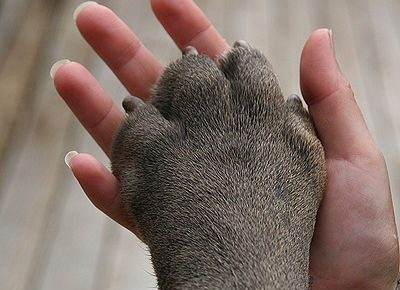
The tongue is not a large organ, but of course a very important one. It is made of muscle, connective and fatty tissue, blood vessels and nerves. There are small, mushroom-shaped protrusions called papillae that cover the top of the tongue and aid in tasting.
A dog’s tongue has many uses besides tasting food and lapping water. The tongue helps to regulate body temperature when the dog pants. It’s an aid in chewing and swallowing. A dog uses the tongue to clean him/herself, lick sores and irritations, groom itself and puppies. And of course to kiss (lick) us.
The tongue is also an indicator of an illness or disease that can arise with itself or other oral conditions. The color, a coating or the texture can show a problem in another part of the body.
If your dog has stopped eating, is drooling, has bad breath, there can be a number of reasons such as inflammation of the tongue (glossitis), gingivitus (gum problems), inflamed lips (chelitis, which usually is a result of an infection in the mouth), tongue ulceration, ingestion of toxins, infections, a cyst on the underside of the tongue (ranula), a cancerous growth (tumor).
Any dark, raised area on any part of the mouth should be checked as soon as possible by the vet as it could indicate cancer.
A healthy tongue is pink and can be the color of bubble gum. There are some breeds like the Chow Chow that have black tongues naturally or flat, black areas on the tongue or inside the lips.
Here are some colors to watch for:
- Red tongue – can be infection, fever, kidney problems, hyperthyroidism, diabetes, cancer or toxins.
- Blue or purple tongue – may be heart and circulatory problems, toxins, liver disease, immune system problem.
- Yellow/orange tongue – liver or gall bladder problem, gastritis.
When you check your dog’s body regularly, include the mouth and tongue. If there are any changes, contact your vet. Early detection of a problem can be a lifesaver.



